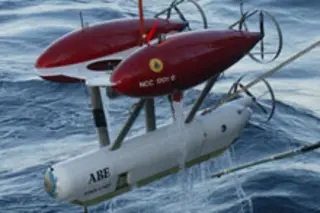An ant faced with two paths to a food source may not know which is best, but an ant colony can quickly sort this out: Individuals leave trails of chemicals called pheromones to mark the route from nest to food and back. As other ants follow, pheromones build up more rapidly along the shortest route, reinforcing the scent and guiding the colony en masse.
A honeybee colony similarly pools its resources to select a home. Several hundred “scouts” head out to search, reporting back on potential sites. Other scouts follow up, choosing sides until a quorum has settled on a particular spot. This life-or-death decision draws on the collective wisdom — or swarm intelligence — of the hive.
Inspired by examples like this, engineers are producing ensembles of small, insect-like robots that cooperatively perform jobs that might be difficult, dangerous or tedious for humans to carry out. As in nature, ...








